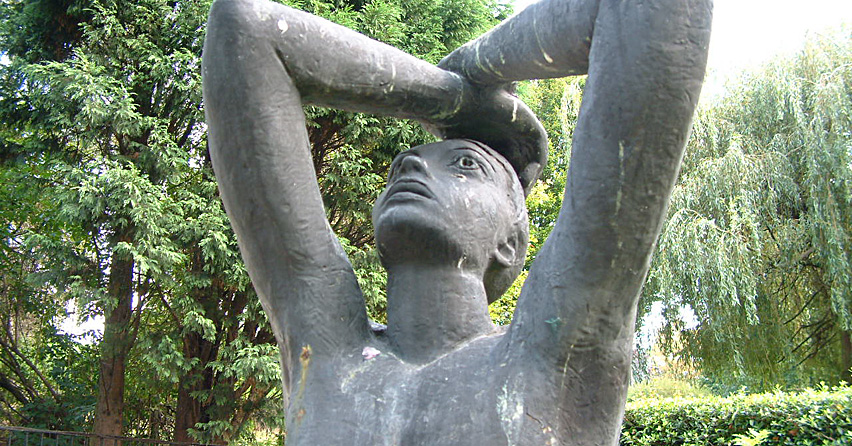PRISONERS OF WAR AND CONCENTRATION CAMP VICTIMS
Five figureswhich form the memorial were presented to Brent Council in 1971 by sculptor Fred Kormis.
At the unveiling ceremony in 1971, Fred Kormis described the sequence of figures: They are a five-chapter novel, each chapter describing a successive state of mind of internment: stupor after going into captivity; longing for freedom; fighting against gloom; hope lost; and hope again.
Fritz Kormis (1987-1988) was born in Frankfurt and served in the Austro-Hungarian army in the First World War. He was held in a Siberia war camp from 1915 to 1920. His experiences there informed the memorial we see today in Gladstone Park.
When Hitler came to power, Nazi laws banned the Jewish sculptor from working and he fled first to Holland, then to England in 1934 where he changed his name to Fred.
In 1960, he formed the idea of creating a memorial to prisoners of war and concentration camp victims to be erected in central London but a site was not found till his friend and the then-leader of Willesden Borough Council Councillor Reg Freeson suggested it would find a welcome home in the borough.
On Christmas Eve 2003 the sculpture were attacked by vandals, who decapitated four of the five figure .The sculptures has now been restored and stands in the North west of the park a spot chosen by Fred Kormis himself.
What's in a name? The statues have acquired a variety of names over time. Including: Martyrs Memorial and holocaust memorial sometimes spelled with a capital H none of which seem to quite match the sculptors own description.
|


